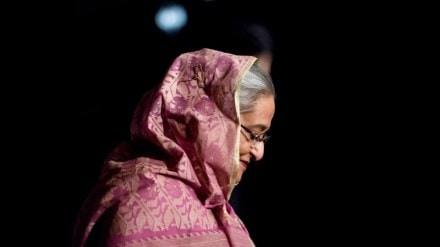Former Bangladesh Prime Minister Sheikh Hasina is likely to remain in India for an extended period due to unexpected complications in her plans to seek asylum in the United Kingdom. Hasina arrived in India on August 5, after violent protests against her government in Bangladesh forced her to flee. Reports suggest that Hasina, along with her sister, had intended to travel to the UK, where members of their family reside, to seek asylum.
However, her plans hit a “technical roadblock” due to UK immigration rules, which require asylum requests to be processed only once the person is physically present in the country. Since Hasina does not hold a visa for the UK, her entry is currently barred, IE reported.
As India has decided to allow Hasina to remain in the country, this decision brings to light the broader issue of India’s approach to refugees. There has been little to no clarity on the Centre’s refugee policy.
Does India have a policy for refugees?
India is not a signatory to the 1951 UN Convention on the Status of Refugees or its 1967 Protocol, which define who is a refugee and outline the rights of individuals who seek asylum. Under these international agreements, a refugee is someone who is outside their country of origin and is unable or unwilling to return due to a well-founded fear of persecution based on race, religion, nationality, membership in a particular social group, or political opinion. In short, India does not have any policy for refugees.
Despite not being bound by these conventions, India has historically welcomed various refugee groups. Nearly 300,000 people in India are classified as refugees, including Tibetans, Chakmas from Bangladesh, and people fleeing conflicts in Afghanistan and Sri Lanka. However, India’s treatment of refugees has been inconsistent.
For instance, while the UN High Commissioner for Refugees (UNHCR) has been allowed to verify and provide identity cards to Rohingya refugees from Myanmar, the Indian government has labeled many of them as illegal immigrants, treating them as trespassers under domestic laws like the Foreigners Act and the Indian Passport Act.
The recent Citizenship Amendment Act (CAA) of 2019 further complicates India’s refugee stance. The CAA offers a path to citizenship for certain persecuted religious minorities from neighboring countries, but it excludes Muslims, thereby introducing a religious criterion into the refugee question.
Why did India not sign UN refugee convention?
In 1951, when the UN established the Refugee Convention in the aftermath of World War II, India was newly independent and still reeling from the trauma of partition. The then Prime Minister Jawaharlal Nehru chose not to sign the convention, citing security concerns.
What are the implications for Hasina in this case?
In Hasina’s case, India’s lack of a clear refugee policy allows the government to be flexible in its response. By permitting her to stay, India avoids an international diplomatic crisis while also maintaining its strategic interests in the region.
